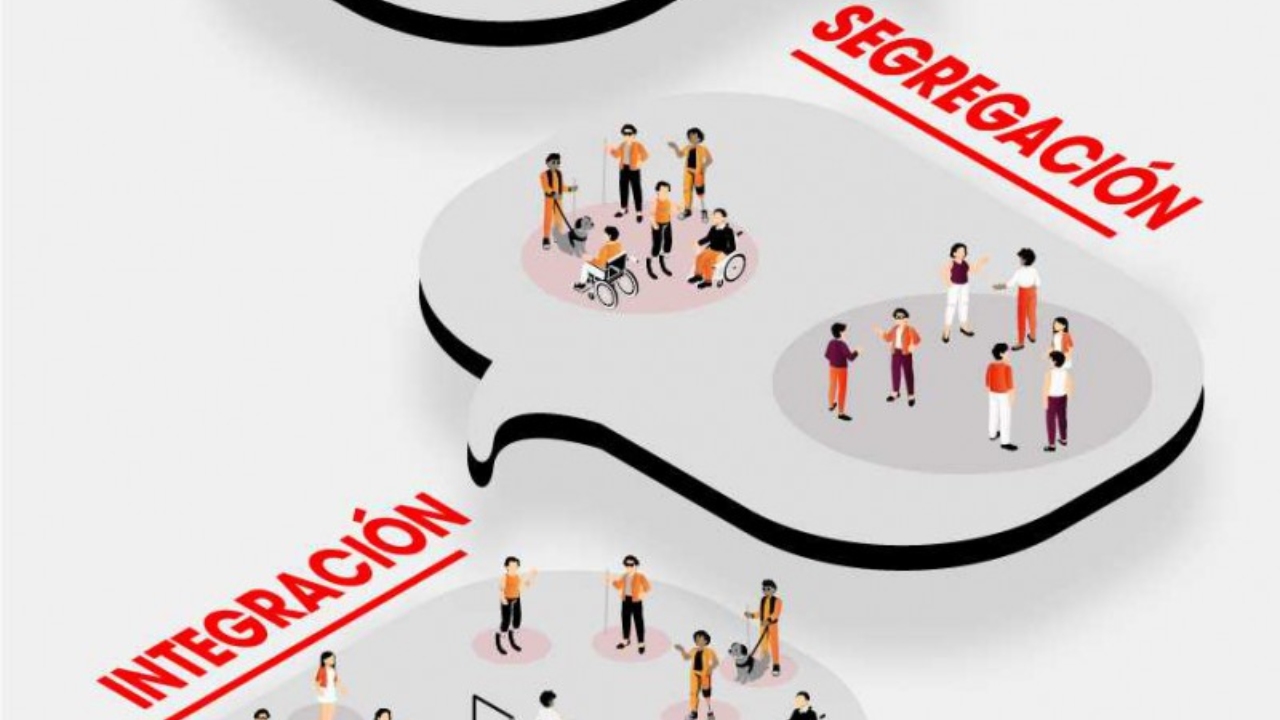“Language is the house of the truth of being”, said the German philosopher Martin Heidegger. We build ourselves and the world we inhabit through the conversations we have, through the language and the words we use. It’s therefore crucially important to be aware of how we use them at all times and to choose them in the most appropriate way. Especially when we talk about inclusive language and disability.
The way we describe the world through language sometimes leaves out many people who are also part of our own reality.
What are we going to talk about in this article?
Language is powerful, dynamic and defines the way we see the world. The words we use to communicate are the basis for our connection to others, to our environment, and to our own identity. Identifying ourselves in our own terms and being recognised with inclusive words is part of democratising language and underlining who we really are.
In this sense, inclusive language seeks to integrate all groups in the way we speak and write. It’s our way of recognising the diversity that makes up our society and of adequately naming the different realities with which we coexist.
Inclusive language seeks to integrate all groups in the way we speak and write.
People with disabilities face multiple external barriers that make it difficult for them to live autonomous and self-sufficient lives. Attitudinal barriers are an important part of these barriers. These are those behaviours, words, feelings, prejudices and stigmas, which prevent or hinder equality between people and encourage the development of other barriers. Linking inclusive language and disability helps us to break them down. We show you how below.
According to the International Convention of Persons with Disabilities, “Disability is an evolving concept resulting from the interaction between persons with disabilities and attitudinal and environmental barriers that hinder their full and effective participation in society on an equal basis with others”.
To begin with, it is important to stress that it’s not possible to speak of a “sector” of people with disabilities with similar characteristics, as the population is very heterogeneous. However, there’s a common link that all people with disabilities share: the existence of a variety of barriers and obstacles in the different environments in which we live our lives. Moreover, disability is just a characteristic of a person. It’s a part that should not reflect the whole of a person’s being.
Disability is a characteristic of a person. A part that should not reflect the whole of his or her being.
From this point, we must be clear about one thing: we must put the person before his or her disability. This is why we should speak of “person with a disability” instead of “disabled”. In the case of specific disabilities, we can say, for example, “a person with Usher syndrome” or “a person with cerebral palsy”. However, everyone has their own preferences, so if you are unsure about which words to use, it is best to ask.
On the other hand, we should avoid using old-fashioned terms such as “handicapped” or “crippled” or using negative or catastrophic terms such as “confined to a wheelchair” and we should also avoid using negative expressions that condition thinking such as “victim” or “sufferer”. In short, there is no compulsory language, but there’s a need to respect and understand the other person’s situation.
When interacting with a person with a disability, the following fundamental aspects should be taken into account:
- Before giving our help to a person with a disability, we should always ask if he or she needs it.
- If the person with a disability asks us directly for help, try to be friendly and positive, asking how we can assist him/her in a correct and safe way.
- Some people with disabilities need us to help them at certain times. Others do not need it at all, or do not want to be helped at all.
- When communicating, we will speak directly to the person with a disability, not to their companion, guide or interpreter.
- We shouldn’t be afraid to ask or treat the person. When we don’t know how to deal with a person with a particular disability, the best thing to do is to ask.
- We will always act naturally, treating the person as much like any other person as possible, avoiding questions about his or her condition.
- Replace the idea of “aid” or “protection” with that of support to avoid excessive protectionism or paternalism.
- Always maintain a non-judgemental attitude, acting without unfounded premises and always respecting the person and his/her possible needs.
Building a more equal world, in which barriers between people are increasingly lower, is everyone’s job. Doing so through inclusive language helps us to achieve this goal.
